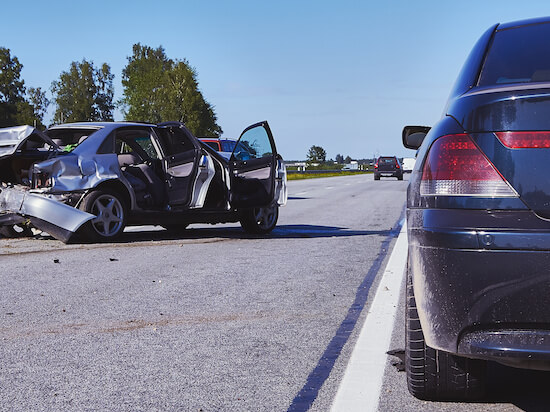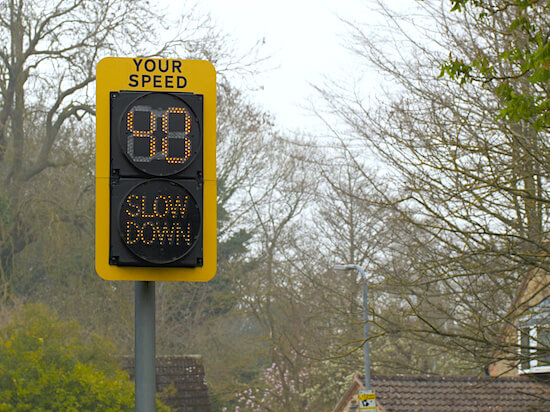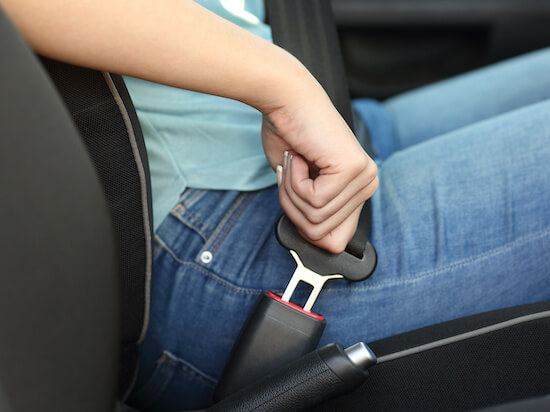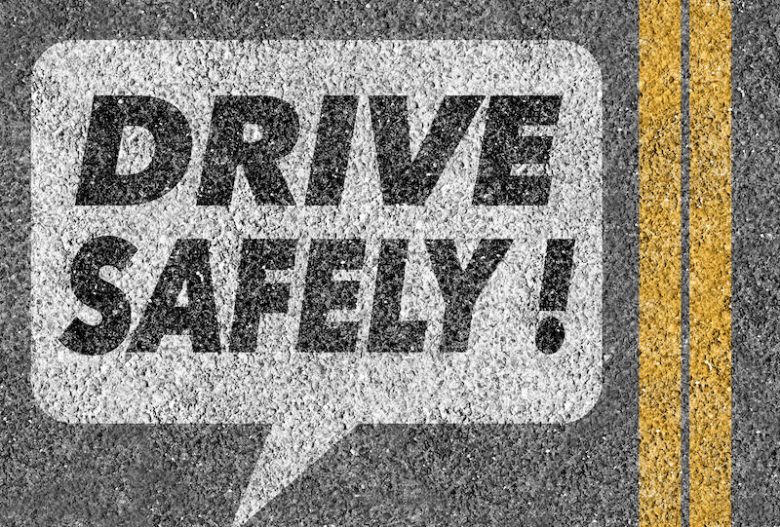Driving safety has been a hot topic for decades now, as each generation tries to improve upon crash rates, life-threatening injuries, and traffic fatalities. Every year brings in new traffic-related statistics, from distracted driving accidents to motorcycle crashes, road rage incidents, and more.
Use eTags© to Quickly Complete Your DMV Service. Renewals, Title Transfers and More, All Online!
Speed-related accidents in 2020 surged 20% from the year before
In 2019, driving distraction was the main culprit for over 56,000 crashes and about 300 fatalities. Even during the 2020 pandemic, when cities nationwide implemented stay-at-home orders and people worked from home, speeding and traffic fatalities went up. U.S. vehicle registrations went down 22.8% in the first six months of 2020. While Americans barely got behind the wheel that year, traffic fatalities increased 7.2%.

Compared to the previous year, 2020 weekend vehicle crashes increased 9%
During the pandemic nighttime fatal accidents went up 11%
The NHTSA’s early estimates show about 38,680 people died in motor vehicle traffic crashes in 2020—the largest projected number of fatalities since 2007. Over 35,000 fatalities even though Americans drove 430.2 billion miles less.
Motorcyclist fatalities went up 9% (compared to 2019) to over 5,000 deaths. For those riding on bicycles, fatalities also increased 5% while 20% more people were ejected from their vehicles.
Over $2.7 billion in safety programs
There’s no denying driving safety is of utmost priority for all states. There are driving safety programs and grants nationwide to help support and implement all types of initiatives to promote safer roads.

The NHTSA’s ROPD Office administers over $500 million in grant programs toward driving safety. Effort areas include occupant protection, distracted driving, impaired driving countermeasures motorcyclist safety, licensing laws traffic safety info systems. The FAST Act authorized $2.7 billion in funding for Highway Safety Programs and National Priority Safety Programs for 2016 through 2020.
California has about 27 million licensed drivers, while Texas has nearly 18 million
There are about 231 million licensed drivers in the U.S., with the majority in California. 84% of the population of California that is of driving age is a licensed driver. Sharing the road is critical to everyone’s safety including pedestrians, motorcyclists, and bicyclists.
Driving safety is a lengthy subject with well-researched and documented key areas such as impaired driving and distracted driving. Let’s take a closer look at the main topics associated with driving safety.

Distracted driving
Talking on the phone, playing with radio channels, texting, eating, practically anything that takes your focus off driving and the road in front you are considered distracted driving behavior. Most states today have some kind of cellphone law in place such as hands-free use only or texting prohibited.
Driving needs your full attention, engaging in another activity while behind the wheel increases your chances of a crash. In 2019, over 3,000 people were killed in a motor vehicle crash involving a distracted driver; that was an increase of 9.9% over the year before.
In Florida, texting violations are rarely enforced: Deputies in Broward, where about 2 million people live, ticketed only 18 drivers for texting in 2020
Manual, visual, and cognitive distractions
Distracted driving encompasses three main distractions: manual, visual, and cognitive. One is about moving your hands away from the steering wheel, the other involved taking your eyes off the road, while cognitive distractions take place when your mind wanders.
Texting is an activity that encompasses all three, which is why many driving safety programs promote no texting and driving. The University of Utah found that cellphone users are 5.36 times more likely to get into an accident than someone who’s not distracted. Texting increases the likeliness of a crash by 23 times.

Impaired driving
Just like driving distractions, being impaired behind the wheel is a major detriment to driving safety. From alcohol to marijuana, to prescription drugs and illicit drugs, if you’re driving under the influence of any of these, that’s impaired driving. It’s illegal to drive with a blood alcohol concentration at or above a specified level: 0.05% or 0.08%, depending on the state.
Nearly one in three traffic fatalities in America involves a driver with a BAC of 0.08% or higher
About 28 people in the U.S. die in drunk-driving crashes — that’s one person every 52 minutes. In 2019, over 10,000 people lost their lives due to drunk-driving accidents. Alcohol has many effects on the body from loss of judgment to exaggerated behavior, and poor coordination which in turn affects how you drive. Prescription drugs also share some of the cognitive effects as alcohol.
Certain kinds of prescription medicines, such as benzodiazepines and opioids, can cause drowsiness, dizziness, and impaired cognitive functioning like thinking and judgment. The specific effects depend on how various drugs affect the brain. For example, marijuana can impair distance awareness and decrease coordination. Methamphetamine can cause aggressiveness and recklessness behind the wheel.
Speeding
Certainly another hot topic among driving safety circles, speeding seems to always have been a problem. The world’s first speeding ticket was issued in Dayton, Ohio in 1904. The driver, Harry Myers, was pulled over for driving 12 miles an hour. In 2020, Virginia took the number one spots for most speeding tickets, followed by Iowa and Ohio.

For over 20 years, speeding has been involved in about one-third of all motor vehicle fatalities. In 2018, speeding was a factor in 26% of all traffic fatalities. Speeding violations surged during the 2020 pandemic too, with reports of 101% increase in Iowa for speeds over 100 mph. California issued over 15,000 tickets in just a few months starting in mid-March.
Connecticut was the first state to pass a speed limit law back in 1901, limiting the legal speed limit to 12 mph in cities and 15 mph on country roads
Speeding puts everyone at risk, car occupants, drivers, pedestrians, even law enforcement and emergency vehicles. When a driver goes over the speed limit, he or she puts themselves at risk for multiple consequences. From losing control of vehicle to needing more stopping distance to even higher fuel cost and consumption.
In fact, rising gas prices caused many states to adopt a speed limit law in the 70s. In 1974, 55 mph became the national speed limit. By the 80s, it changed to 65 mph on interstates. Today, the fastest road in the U.S. is a toll road between Austin and San Antonio with a speed limit of 85 mph.
Teen driving
Vehicle accidents are the second leading cause of death for American teenagers. Teens are one of the most vulnerable populations on the roads since they don’t have enough experience behind the wheel. They have a harder time to judge traffic gaps, adopting the right speed for the driving/weather conditions they’re in, safe turns and the like. They also tend to not wear their seatbelts, both as passengers and drivers.
Half of all teens will be involved in a car crash before graduating high school

Teens have the lowest rate of seat belt use of any age group, according CDC. In 2019, 36,096 people died in motor vehicle traffic crashes on U.S. roadways, with nearly half (47%) not wearing a seat belt. That same year, about 2,400 teenagers ages 13 to 19 lost their lives in a car accident — that’s seven teens a day!
16- to 19-year-olds are three times more likely than 20-year-olds and older to get into a fatal crash per mile driven. Distractions behind the wheel puts younger drivers even in more danger, as research has found there are six times more at risk when dialing a phone number and 23 times while texting. Drowsy driving, being behind the wheel with other teens in the car, driving at night, and speeding are danger zones for teens.
Road fatalities declined by 90% in past seven decades
We’ve come a long way regarding driving safety. In 1925, the U.S. had six or seven times less drivers than during the end of the 90s. America also had 11 times the number of vehicles. Despite that, by 1997 the annual death rate has declined by 90%. Yet, we still have a long way to go to.

The 2020 pandemic ushered in with it a need for speed; traffic fatalities soared to highest level in close to 15 years. Currently, various highway associations are implementing safety pilot programs to counteract the hike in crashes and fatalities.
And don’t forget current vehicle registration are also part of #DrivingSafety
Learn More About Driving Safety For Learner’s Permit
Learn More About Driving Safety For First-Time Drivers
Learn More About Driving Safety For Experienced Drivers
Learn More About Driving Safety For Employees
Learn More About Driving Safety For Motorcycle Riders
Learn More About Driving Safety For Pregnant Women
Learn More About Driving Safety For Parents With Young Children and Babies
Learn More About Driving Safety For Recreational Vehicles and RVers
Learn More About Driving Safety For Rideshare Drivers
Learn More About Driving Safety For Diabetic Drivers
Learn More About Driving Safety For Nighttime Drivers
Learn More About Driving Safety For Miami Drivers
Learn More About Driving Safety For New York City Drivers
Learn More About Driving Safety For Los Angeles Drivers
Learn More About Driving Safety For Delivery Drivers
